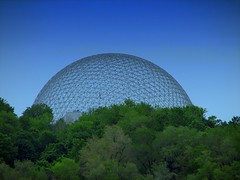AP Environmental Science - Ecology Flashcards
Terms : Hide Images [1]
| 8554712334 | Ecology | The branch of biology that deals with the relations of organisms to one another and to their physical surroundings. (The study of connections in nature) |  | 0 |
| 8554712335 | Ecosystem | A community where populations of different species interact with one another and with their nonliving environment of matter and energy. |  | 1 |
| 8554712336 | Population | A group of individuals of the same species that live in the same area. |  | 2 |
| 8554712337 | Species | A group of organisms that resemble one another in appearance, behavior, chemistry, and genetic makeup. |  | 3 |
| 8554712338 | Habitat | An environment that provides an organism or species with the means to live, grow, and reproduce. (Can be as large as the ocean or as small as an animal's intestine) |  | 4 |
| 8554712339 | Abiotic factors | Non-living chemical and physical parts of the environment that affect living organisms and the functioning of ecosystems. |  | 5 |
| 8554712340 | Biotic factors | The living factors in the environment such as producers, consumers, and decomposers. |  | 6 |
| 8554712341 | niche | The place or function of a given organism within its ecosystem |  | 7 |
| 8554712342 | Fundamental niche | entire set of conditions under which an animal (population, species) can survive and reproduce itself. |  | 8 |
| 8554712343 | Realized niche | the part of fundamental niche that an organism occupies as a result of limiting factors present in its habitat. |  | 9 |
| 8554712344 | Limiting factors | environmental conditions that limit the growth, abundance, or distribution of an organism or a population of organisms in an ecosystem. ... also competition between individuals of a species |  | 10 |
| 8554712345 | Carrying Capacity | the size of a population that a region can support without environmental degradation. |  | 11 |
| 8554712346 | Population dynamics | the size and age composition of populations as dynamical systems, and the biological and environmental processes driving them |  | 12 |
| 8554712347 | S & J population curves | Patterns of growth in an environment |  | 13 |
| 8554712348 | Community | the study of the interactions between species in communities on many different scales |  | 14 |
| 8554712350 | Photosynthesis | A process used by some autotrophs to capture light energy and use it to convert carbon dioxide and water into oxygen and glucose 6CO2 + 6H2O + light --> C6H12O6 + 6O2 |  | 15 |
| 8554712351 | Trophic level | each of several hierarchical levels in an ecosystem, comprising organisms that SHARE the same function in the food chain and the same nutritional relationship to the primary sources of energy |  | 16 |
| 8554712353 | Productivity | he rate of production of new biomass by an individual, population, or community; the fertility or capacity of a given habitat or area. |  | 17 |
| 8554712354 | Gross primary productivity (GPP) | the total amount of biomass produced via photosynthesis over a given amount of time |  | 18 |
| 8554712355 | Net primary Productivity (NPP) | The energy captured by producers in an ecosystem minus the energy producers respire |  | 19 |
| 8554712356 | Biomes | Broad, regional types of ecosystems characterized by distinctive climates and soil conditions and distinctive kinds of biological communities adapted to those conditions. |  | 20 |
| 8554712357 | Biosphere | All of the Earth's ecosystems, or the global ecosystem where all life in interconnected. |  | 21 |
| 8554712358 | Salinity | the concentration of dissolved salts in water |  | 22 |
| 8554712359 | Species diversity | number of different species that are represented in a given community |  | 23 |
